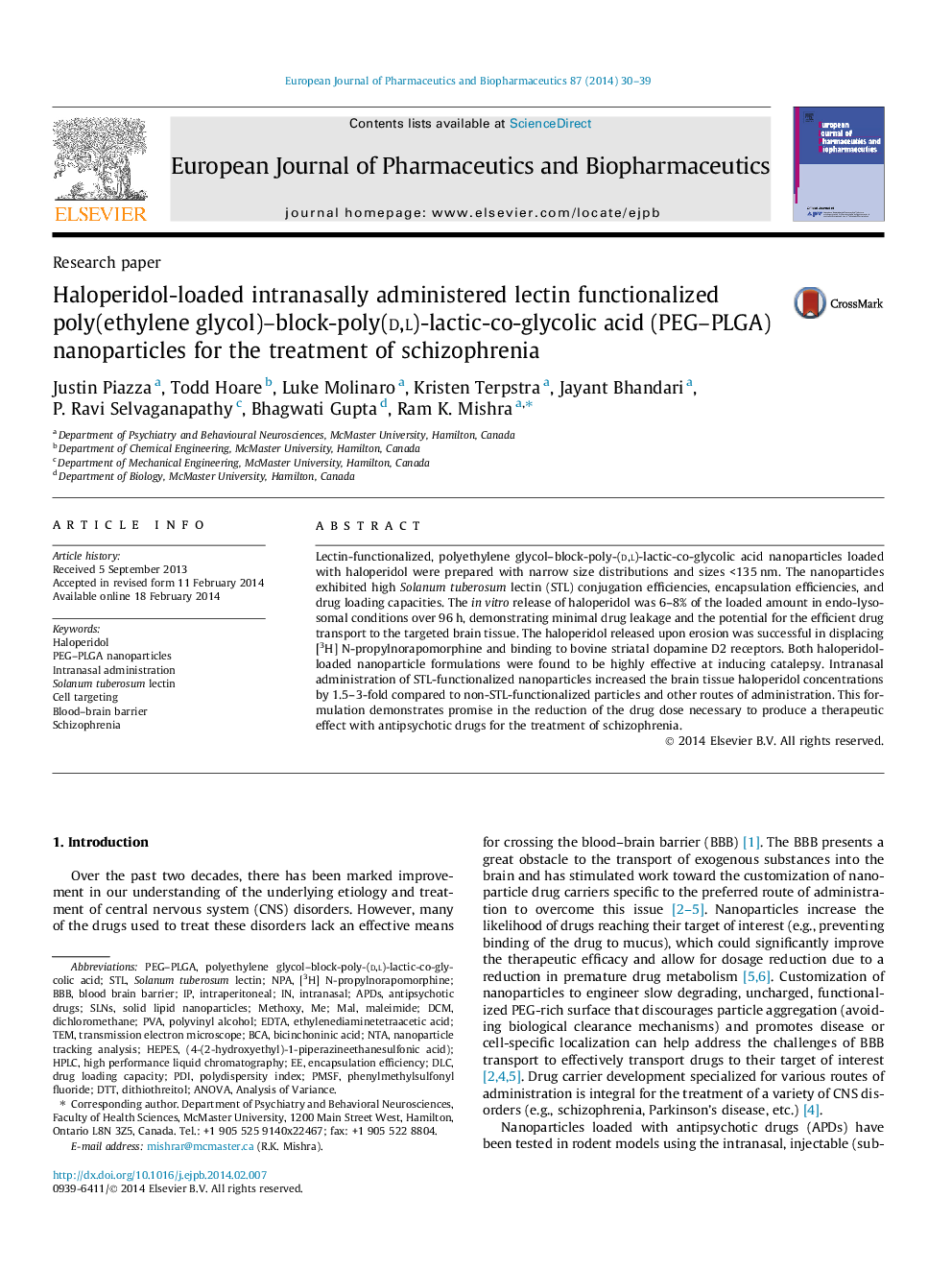| Article ID | Journal | Published Year | Pages | File Type |
|---|---|---|---|---|
| 2083616 | European Journal of Pharmaceutics and Biopharmaceutics | 2014 | 10 Pages |
Lectin-functionalized, polyethylene glycol–block-poly-(d,l)-lactic-co-glycolic acid nanoparticles loaded with haloperidol were prepared with narrow size distributions and sizes <135 nm. The nanoparticles exhibited high Solanum tuberosum lectin (STL) conjugation efficiencies, encapsulation efficiencies, and drug loading capacities. The in vitro release of haloperidol was 6–8% of the loaded amount in endo-lysosomal conditions over 96 h, demonstrating minimal drug leakage and the potential for the efficient drug transport to the targeted brain tissue. The haloperidol released upon erosion was successful in displacing [3H] N-propylnorapomorphine and binding to bovine striatal dopamine D2 receptors. Both haloperidol-loaded nanoparticle formulations were found to be highly effective at inducing catalepsy. Intranasal administration of STL-functionalized nanoparticles increased the brain tissue haloperidol concentrations by 1.5–3-fold compared to non-STL-functionalized particles and other routes of administration. This formulation demonstrates promise in the reduction of the drug dose necessary to produce a therapeutic effect with antipsychotic drugs for the treatment of schizophrenia.
Graphical abstractFigure optionsDownload full-size imageDownload high-quality image (147 K)Download as PowerPoint slide
